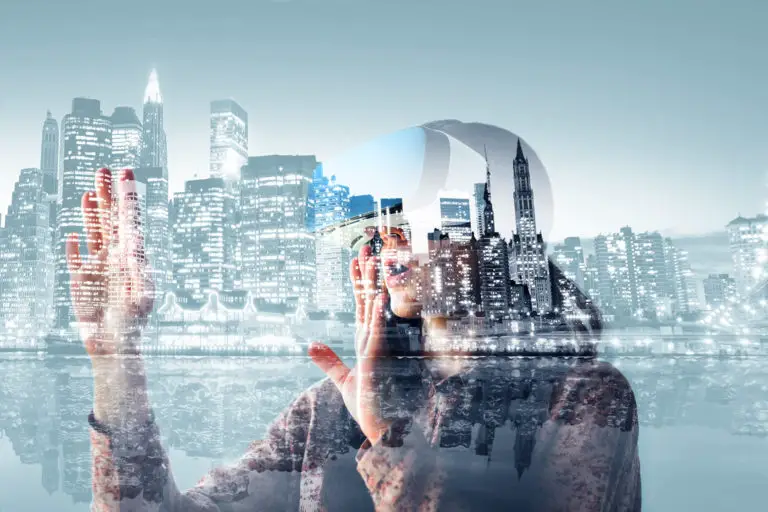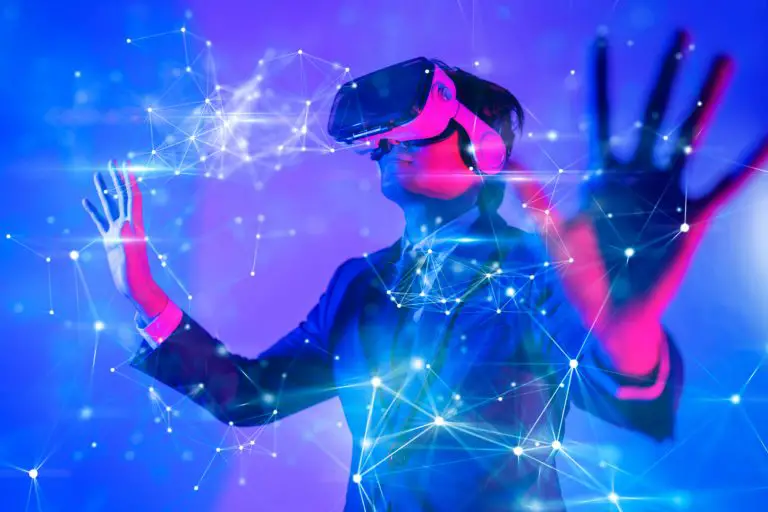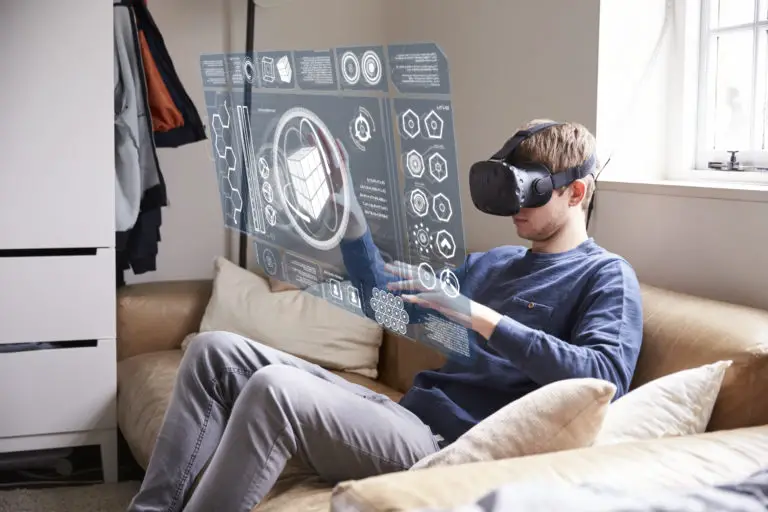The idea of our reality being nothing more than an intricate virtual simulation has captivated the human mind for years. While this notion has often been explored in science fiction movies like “The Matrix,” it has recently found its way into the realm of science and academia. Physicists and philosophers have been pondering the question of a simulated reality for quite some time, and now physicist Dr. Melvin Vopson from the University of Portsmouth in the United Kingdom has introduced a new twist to this age-old concept. He suggests that a new law of physics might actually support the idea that our perceived reality is, in fact, a simulation running on a cosmic computer.
The concept that the universe operates on quantum codes has been popularized over the years, largely due to philosopher Nick Bostrom’s 2003 paper on the simulation argument. According to Bostrom’s proposal, advanced civilizations could create complex simulations for various purposes, such as exploring their history or providing entertainment. This idea has gained popularity, even among influential figures like Elon Musk, who believes that the chances of us living in “base reality” are extremely low. So, could it be possible that we are like characters in a video game, constrained to a limited world while more advanced beings observe our existence?
Dr. Vopson’s research stems from the fundamental idea that information is the building block of the universe and possesses energy and mass. He draws a comparison to the cells of living organisms, which are coded with DNA containing essential information about themselves. Dr. Vopson had a breakthrough in 2022 when he observed that information systems do not follow the second law of thermodynamics, which states that natural processes lead to increased disorder or entropy.
Surprisingly, Vopson found that entropy in information systems can actually decrease, leading him to establish what he calls the second law of information dynamics. In his recent paper published in AIP Advances, Vopson utilizes this concept to explain how the removal of excess information in our universe mirrors the process of a computer deleting or compressing unnecessary code to save storage space and conserve power. This concept supports the idea that our perceived reality could indeed be a Matrix-style artificial environment, where everything we perceive is a virtual facsimile.
Empirical Evidence and the Challenges of Proving the Simulation Hypothesis
While Dr. Vopson’s work provides empirical evidence that bolsters the simulation hypothesis, it is essential to note that this theory is difficult to prove or disprove. According to David Kipping, an astronomer at Columbia University, recent research suggests that the odds of living in a base reality are almost evenly split, with a slight favor toward our universe not being simulated. However, the key takeaway is that this theory is highly thought-provoking and continues to push the boundaries of our understanding of reality.
The question of whether we are living in a simulation raises many intriguing debates, but is it something that can be tested? Some scientists believe that it might be possible to identify glitches or anomalies in the simulation that could serve as evidence.2 However, the current consensus leans towards the idea that if the simulation is perfect and has infinite computing power, we might never find a way to detect it. Instead, some researchers are looking to quantum physics experiments to explore the idea further. Quantum systems, governed by the mysterious wave function, exhibit unique behavior. If inconsistencies or shortcuts could be found in these quantum systems, it might suggest a simulated reality. However, as of now, these ideas remain conjectures, and finding definitive evidence remains a challenging task.
One scientist, David Kipping, suggests that Occam’s Razor, the principle that the simplest explanation is often the correct one, should lead us to favor the notion that we are living in “base reality.” Kipping argues that the simulation hypothesis is overly complex, involving nested realities and simulated entities that cannot perceive their true existence. Therefore, he believes that Occam’s Razor should lead us to favor the simpler explanation that we are indeed living in the real world.
The Perplexing Concept of Living in a Simulation
The idea that our existence might be nothing more than lines of code in an advanced virtual world is undeniably captivating. It’s a concept that has fueled countless late-night conversations, scientific debates, and philosophical ponderings. While physicists like Dr. Vopson are delving into this thought-provoking territory with new insights and evidence, the notion remains firmly in the realm of theory, lacking definitive answers.
This enigmatic concept forces us to confront the boundaries of our understanding of reality. Are the experiences we perceive and the world we know simply constructs within a grand simulation, akin to characters in a meticulously designed video game? Or are we genuine inhabitants of a physical, tangible universe? The answers to these questions remain elusive, shrouded in the mystery of our existence.
The quest to uncover the truth behind this age-old question is an ongoing odyssey. As we explore the tantalizing possibility that we might be living in a simulated reality, we are compelled to examine our fundamental assumptions about the nature of the universe. It’s a journey that challenges the very core of our understanding and leaves us with more questions than answers.
One thing is abundantly clear: the pursuit of knowledge and the exploration of the simulation hypothesis are far from over. As we navigate this intellectual labyrinth, we find ourselves on the cusp of discovery, teetering on the edge of a profound revelation. The allure of understanding the true nature of our existence continues to beckon, drawing us deeper into the enigma of whether we are mere characters in an advanced virtual world or inhabitants of a genuine, physical reality.
In the absence of concrete answers, we are left with a tantalizing sense of wonder and curiosity. The journey to unravel this perplexing concept is a testament to the enduring human spirit of inquiry and exploration. As we grapple with the mysteries of our existence, one thing is certain: the quest for truth is a journey that will endure, keeping us forever engaged in the enigma of our own reality.
Exploring Other Research on Simulated Reality
While Dr. Vopson’s research presents a new perspective on the concept of a simulated reality, other scientists have also contributed to the ongoing discussions around this intriguing idea. One notable study conducted by a team of researchers from the University of Bonn in Germany used artificial intelligence (AI) to investigate the possibility of detecting evidence for a simulated universe.
The researchers simulated various scenarios and observed how AI algorithms would behave in each scenario. They found that in a simulated universe, certain features would remain statistically constant while others would fluctuate depending on the simulation’s parameters. By analyzing these statistical patterns, the AI algorithms were able to identify potential signs of a simulated reality.
This study adds another layer of complexity to the debate surrounding simulated reality. While it provides a potential avenue for detecting evidence of a simulation, further research is needed to validate these findings and explore their implications.
Virtual Reality and Augmented Reality
The concept of living in a simulated reality shares intriguing parallels with two modern technologies that have been revolutionizing the way we perceive and interact with the world: Virtual Reality (VR) and Augmented Reality (AR). While these technologies may not be explicitly designed to simulate an entire reality as proposed by the simulation hypothesis, they offer captivating glimpses into the realm of artificial environments and the manipulation of our perception of reality.
Virtual Reality (VR) immerses users in computer-generated environments, effectively isolating them from the physical world. When donning a VR headset, individuals are transported to entirely new realms, be it the depths of the ocean, the surface of distant planets, or even fantastical landscapes limited only by human imagination. In this simulated environment, users can interact with elements that exist solely in the digital realm. The profound sense of presence and immersion in VR is, in many ways, akin to the notion of living within a meticulously crafted simulation.
Augmented Reality (AR), on the other hand, enhances our perception of the real world by overlaying digital information onto our physical surroundings. Imagine strolling through a historic city, and through the lens of your AR-enabled smart glasses, historical figures come to life, providing commentary on the architecture and events of bygone eras. AR seamlessly integrates the virtual and the real, blurring the line between what is physically present and what is artificially added. In doing so, it challenges our conventional understanding of reality by introducing digital layers that coexist with our tangible environment.
While VR and AR may not aim to replicate the entirety of our existence within a simulation, they unquestionably push the boundaries of our understanding of “reality.” These technologies invite us to question the nature of our perception and challenge the traditional demarcation between the tangible world and the digital realm. In essence, they offer a tantalizing taste of what it means to coexist in a world where the boundaries between the physical and the virtual are increasingly porous.
As we delve deeper into the possibilities of VR and AR, it becomes apparent that the lines between the real and the simulated are becoming more blurred than ever before. The very technologies designed to enhance our experiences may, in some ways, be paving the path to a future where the concept of living in a simulation is not as far-fetched as it might seem. In this rapidly evolving landscape, the boundaries of reality itself continue to shift, keeping our curiosity perpetually piqued.
Signs and Symptoms of a Simulated Reality
While the idea of living in a simulated reality remains a tantalizing and somewhat mind-bending concept, it’s essential to acknowledge that definitive proof remains elusive. However, some theorists have put forth intriguing arguments suggesting that our existence might indeed be part of an advanced virtual world. Let’s explore these signs and symptoms that fuel the debate.
1. Glitches in the Matrix
Imagine you’re going about your day when something inexplicable happens – an object seems to defy the laws of physics, or an event occurs that defies all logical explanation. These anomalous occurrences, sometimes referred to as “glitches,” are one of the hallmarks of a simulated reality. If we are living in a computer simulation, occasional hiccups in the system could manifest as unexplainable phenomena, defying the very fabric of our perceived reality.
2. Fine-Tuned Laws of Physics
Our universe operates with astonishing precision, and many argue that this precision suggests a deliberate design. If our reality is a simulation, the creators would need to finely tune the laws of physics to maintain the simulation’s stability. The fact that the fundamental constants of the universe, such as the speed of light or the strength of gravitational forces, are precisely calibrated to allow for the existence of life has led some to question whether this finely tuned nature is more than mere chance.
3. Quantum Uncertainty as a Window
Quantum physics, the baffling realm of the very small, has long been a subject of fascination for scientists and philosophers alike. Its inherent unpredictability and uncertainty raise intriguing questions. Some theorists propose that the strange behavior exhibited by quantum systems, where particles can exist in multiple states simultaneously until observed, might be indicative of underlying computational processes. Could quantum mechanics be a window into the inner workings of the simulation?
4. Pushing Computational Limits
If our reality is indeed a simulation, it is bound by computational limits. Think of it as the maximum processing power of a supercomputer responsible for rendering our world. Some scientists argue that by pushing the boundaries of what is computationally possible, we might stumble upon clues or anomalies that hint at the limitations of our simulated existence. These limits could manifest as constraints on the complexity and detail of our perceived world.
While these signs and symptoms are thought-provoking, it’s essential to remember that they are speculative in nature. The simulation hypothesis remains a topic of intense debate and exploration, and whether or not we are characters in an advanced virtual world is a question that continues to challenge our understanding of reality. In the next sections, we’ll delve deeper into the arguments both for and against this intriguing proposition.
The Unending Quest for Truth
The question of whether we live in a simulated reality continues to captivate the human imagination. While researchers like Dr. Vopson and the team from the University of Bonn explore different angles of the simulation hypothesis, no definitive answers have been found. The quest for truth in this area is ongoing, driven by our insatiable curiosity and the desire to unravel the mysteries of our existence.
As technology advances and our understanding of the universe deepens, we may someday find conclusive evidence one way or another. Until then, the simulated reality hypothesis stands as a thought-provoking theory that challenges our perceptions and pushes the boundaries of scientific exploration.
Sources:
The Matrix: Are we living in a simulation?
The science behind The Matrix: can we power the world with our own mind and bodies?
Are we already living in virtual reality?

This Site Was Inspired By An Interest in Protecting the Environment:
We had the privilege and joy of learning from Dr. Charlie Stine who instilled a love for the natural world through incredible field trips with the Johns Hopkins Odyssey Certificate program in Environmental Studies. At the time, the program was endorsed by the Maryland Department of Natural Resources. Sadly, after Dr. Stine retired, the program was phased out. We hope that we honor his legacy by shining a bright light on environmental issues and sharing good news about the success of various conservation programs when possible.






